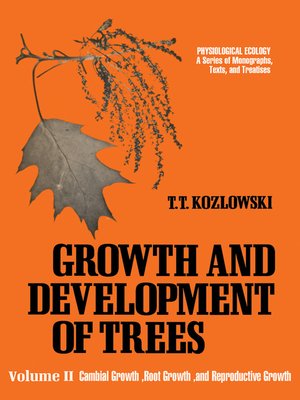
Sign up to save your library
With an OverDrive account, you can save your favorite libraries for at-a-glance information about availability. Find out more about OverDrive accounts.
Find this title in Libby, the library reading app by OverDrive.



Search for a digital library with this title
Title found at these libraries:
| Library Name | Distance |
|---|---|
| Loading... |
Growth and Development of Trees, Volume II: Cambial growth, Root Growth, and Reproductive Growth describes the important features of growth and development of trees and other woody plants during their life cycles. This nine-chapter book highlights the significant changes that take place in vegetative and reproductive growth as woody plants progress from juvenility to adulthood and, finally, to a senescent state. The first four chapters cover the growth of tree cambium, which is a layer of delicate meristematic tissue between the inner bark or phloem and the wood or xylem. These chapters examine the variation, control, and measurement of cambial growth. The next two chapters look into the growth mechanism of specialized and modified root systems, such as aerial, grafted, knee, and nodulated roots, root buttresses, mycorrhiza, and pneumatophores. These chapters also discuss the distribution and growth characteristics of roots of woody plants. Other chapters explore the significant changes and features during flowering and fruit, cone, and seed development. The last chapter considers some aspects of internal and external control of reproductive growth at critical stages of development. Some practical methods for stimulating fruit and seed production by trees are also provided. This book will be of great value to arborists, foresters, horticulturists, plant ecologists, plant physiologists, plant anatomists, tree breeders and geneticists, plant pathologists, entomologists, soil scientists, meteorologists, and landscape architects. It is also intended for upper level undergraduate and graduate students.







